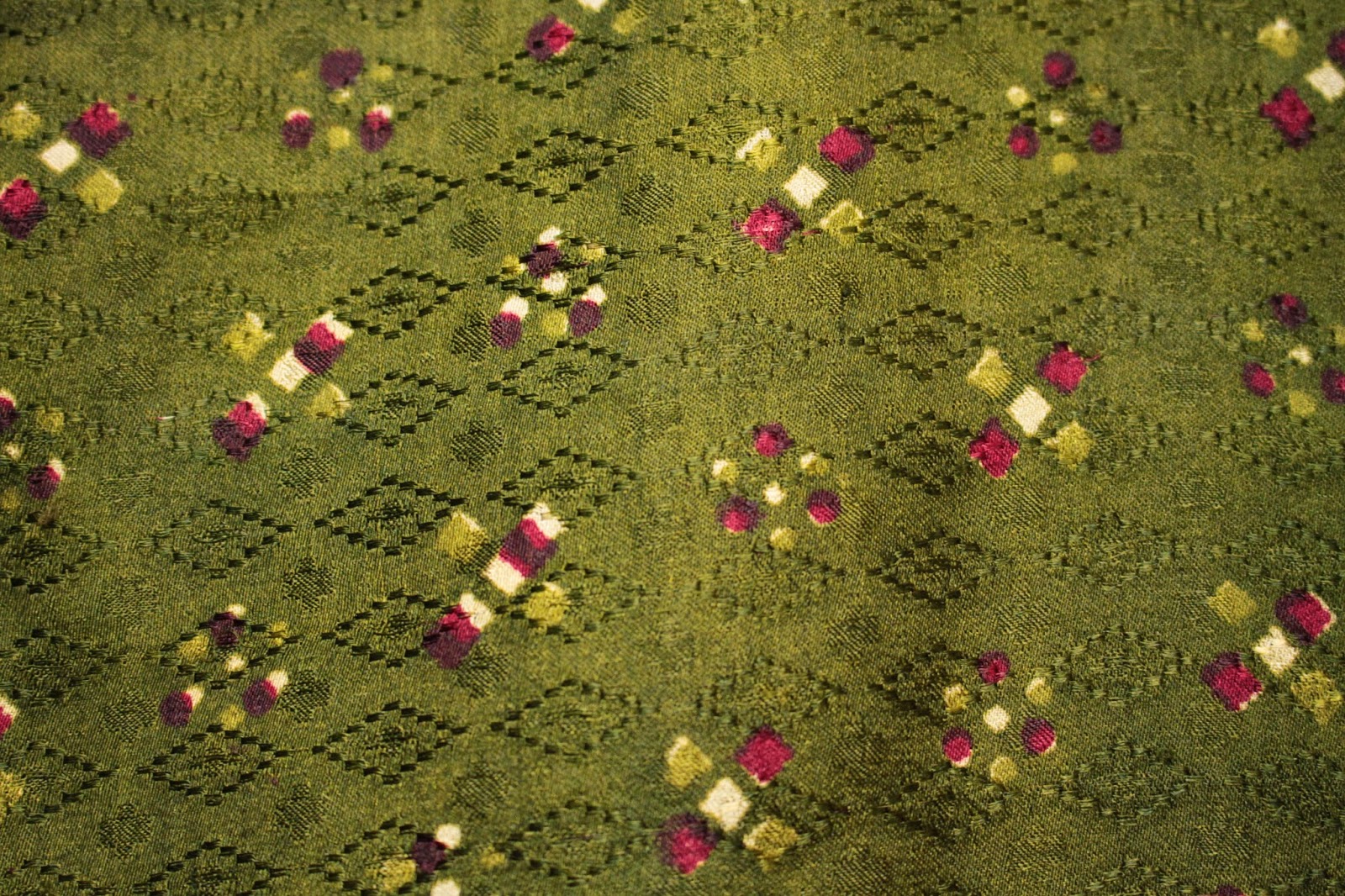A charming silk lady's evening bag/purse from the late Art Nouveau period
Made from beautiful embroidered silk textile in a camomile/daisy design, made by Chinese embroiderers in Gujarat, India producing textiles for the Parsee community in Bombay in the 19th century. The bag has a very well made grained imitation ivory clasp with button catch in an early bakelite type material, two rings with attached strap in the same embroidered fabric. The bag is in excellent condition with the inside professionally relined in green silk. So although antique, the bag is suitable for use or display. Size excluding strap 17cm x 15cm.
For more details and photos see: www.tribal-art.org or www.kilim.ie




















